How to remove the powder tray from a Beko washing machine?
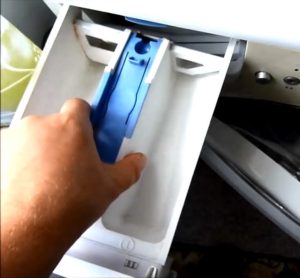 Any automatic machine requires careful handling and timely cleaning. It is necessary to periodically wash the equipment from the inside, regularly wipe the surface of the drum, the hatch door, ventilate the washing machine, and rinse the detergent dispenser. Some people have problems with the latter due to not knowing how to remove the powder tray from the Beko washing machine. Let's figure out how to get the cuvette and then correctly install it in place.
Any automatic machine requires careful handling and timely cleaning. It is necessary to periodically wash the equipment from the inside, regularly wipe the surface of the drum, the hatch door, ventilate the washing machine, and rinse the detergent dispenser. Some people have problems with the latter due to not knowing how to remove the powder tray from the Beko washing machine. Let's figure out how to get the cuvette and then correctly install it in place.
Principle of powder receptacle extraction
With reasonable care, it is not difficult to remove the powder receptacle from the Beko automatic machine, but some nuances still have to be taken into account. So, if you simply pull the container towards you, the protective system is activated, and the tray seems to jam. In this situation, by forcefully pulling the dispenser, you can completely break the structure. Therefore, you need to act correctly:
- pull the container towards you until the tray stops;
- Without releasing the dispenser, with your second hand press the “tab” located above the middle section of the powder receptacle (the blue section for the conditioner);
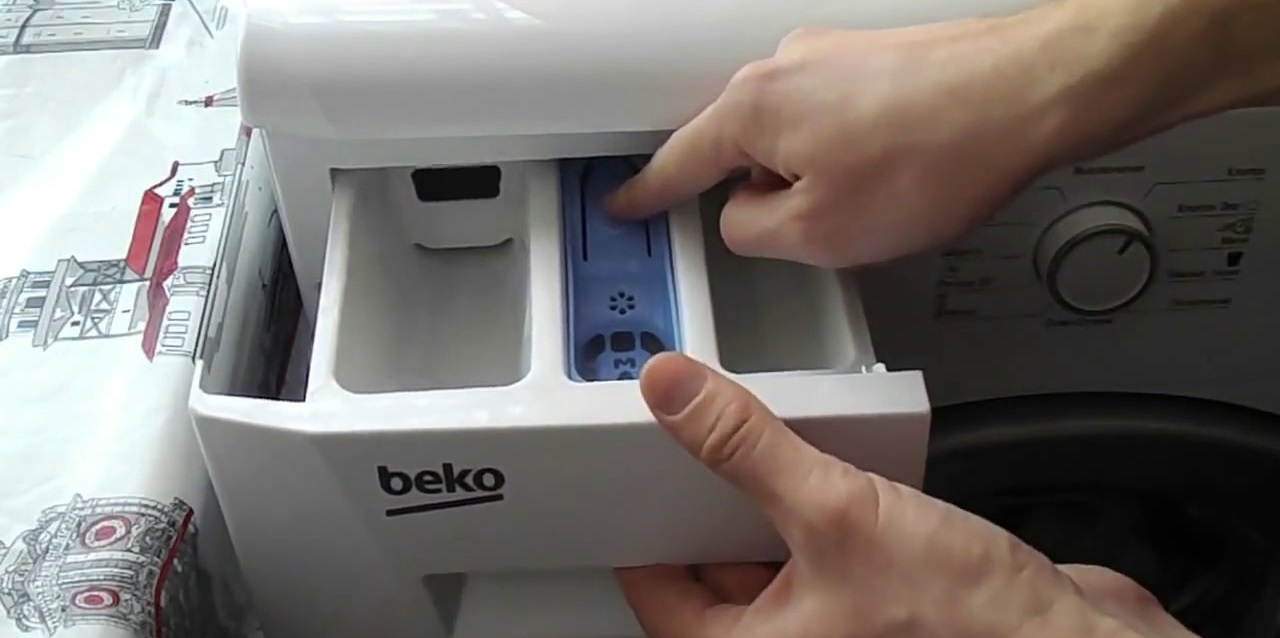
- remove the tray from the hopper.
On some Beko models, the rinse aid section is located on the left, therefore, the “tongue” is located there, above it.
Returning the container to the hopper is even easier - just insert it straight into the hole. There are special guides for the tray on the walls of the niche. Once you place the cuvette in place, you will understand that this task is elementary. Now let’s figure out how to properly care for your “home assistant.” Let's talk about how often you should wash the powder receptacle and what to do if the dispenser is very clogged.
Clean the tray until it shines
As already mentioned, washing equipment requires timely maintenance. Ideally, wash the cleaning product tray after each use of the automatic machine. In this case, it will be enough to remove the cuvette and rinse under running warm water. Particles of powder deposited on the walls will quickly be washed off under pressure.
When a container is not cleaned for several months, plaque forms on its surface, and pockets of mold may appear in the cells. In this case, you will have to make more efforts to return the powder receptacle to its previous appearance. There are several methods for dealing with heavy cuvette contamination.
- Prepare a sponge with an abrasive surface. In a cup, mix water and baking soda in a one to one ratio. Pour the resulting slurry into the tray. After a couple of hours, wipe the powder receptacle with a hard sponge, removing mold and plaque from the walls.
- Fill the cuvette with soda, pour nine percent vinegar on top, and stir the slurry. This “cocktail” will help remove all deposits from the inner surface of the cleaning product tray.

- Pour one liter of boiling water and 200 ml of 9% vinegar into the powder container. The dispenser with this filling must “acidify” for at least 6 hours. When the time is up, the dirt will move away from the walls of the tray and can be cleaned off with a regular rag or sponge.
- Another proven remedy is citric acid. It is necessary to pour lemon powder into the dispenser, into all three sections, and run a high-temperature wash (with an empty drum). Water heating should be 60 degrees and above. There will be no trace left of mold and plaque at the end of the cycle.
It is important to rinse the tray of powder residues after each wash and “ventilate” it to evaporate excess moisture.
This is the only way to avoid the formation of mold and deposits on the walls of the container. After washing, either wipe the dispenser dry with napkins, or insert it not completely into the machine body so that the water drops dry on their own.
Tray does not fit well
It happens that the cuvette, even if all the rules are followed, is difficult to remove from the washing machine. The issue may be due to interfering “teeth” at the bottom of the cells; this is a factory defect, which is very easy to solve on your own.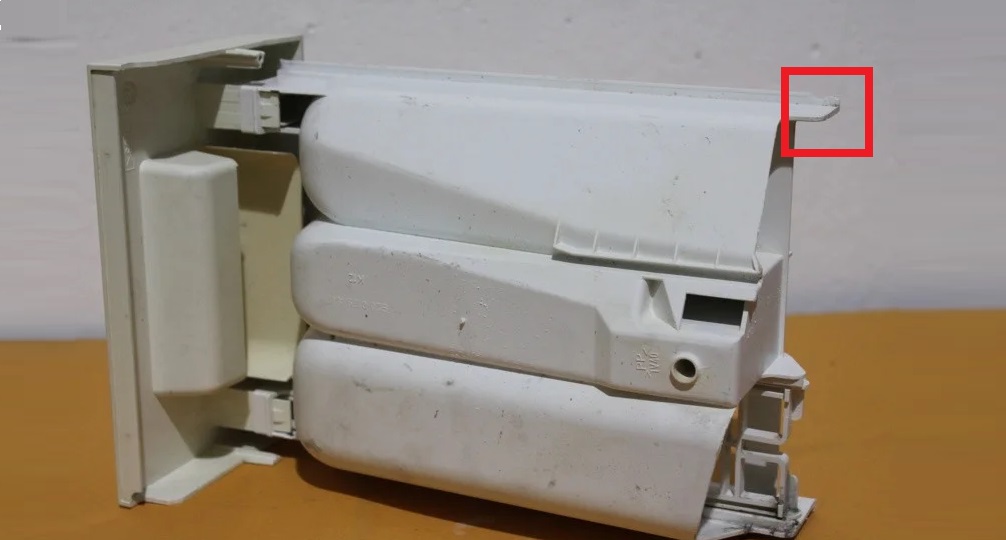
If you bought a new machine and the first time removing the container was difficult, after cleaning, do not rush to push the cuvette back. Otherwise, secondary flushing of the powder receiver will be accompanied by similar difficulties. Experts recommend taking sandpaper or a file and slightly sharpening the interfering teeth.
It is enough to cut down literally 1 mm of plastic so that the container can freely come out of the niche and be inserted back. After this procedure, there will no longer be any difficulties with removing the dispenser.
Interesting:
Reader comments
- Share your opinion - leave a comment

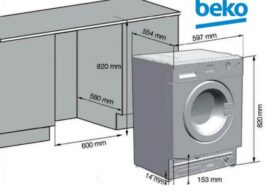
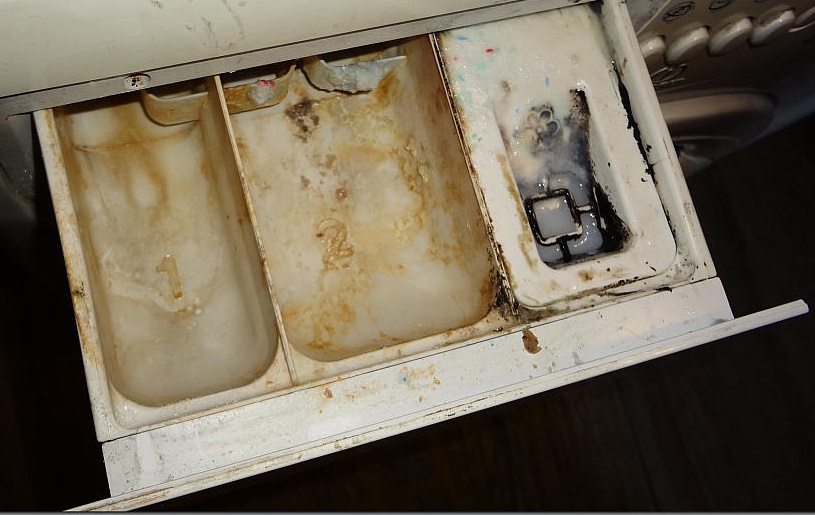

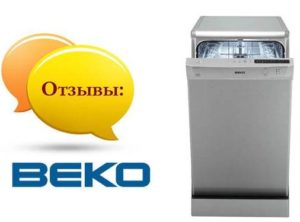
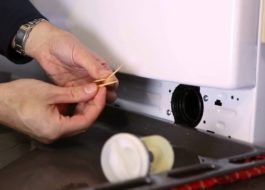
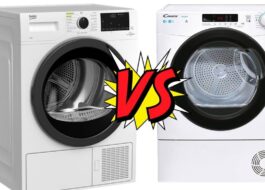














Add a comment